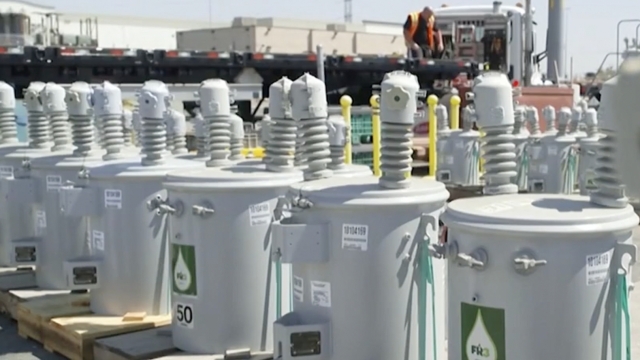As the nation grapples with historic heat and hurricane season is on the horizon, power companies are sounding the alarm about a potential energy crisis.
Energy trade groups warn that those lucky enough to have air-conditioned homes amid dangerously hot conditions can't count on aging transformers to keep the power on.
And, if transformers blow during severe storms, a supply chain shortage means it could take more than a year for power companies to get new ones while inventory rapidly depletes.
Mike Partin, president and CEO of the Sequatchie Valley Electric Cooperative, says there is a lingering supply chain crunch putting the entire country at risk because it could take 52 to 56 weeks to get new transformers instead of the typical 4-week turnaround from manufacturers.
Transformers are crucial to the grid because they change the voltage of electricity to make it usable. The Department of Energy says the entire stability of the electricity grid depends on supply meeting demand, and calls transformer outages a matter of national security.
Tim Mills, the CEO of ERMCO, a transformer distributor, says there aren't national or regional stockpiles of transformers. But he says many of ERMCO's customers have seen their inventory drop in half amid the shortage, while others power companies are nearly out of transformers entirely.
SEE MORE: Hot weather and other issues affecting oil production and gas prices
With hurricane season ahead, ERMCO estimates if a storm wipes out enough transformers in a city with no reserves, it could take several weeks to bring the lights back on.
As lead times on new transformers grow longer, utilities are also worried about the nation's ability to make new ones because transformer cores use a specific type of steel called grain-oriented electrical steel (GOES). Most GOES manufacturers are overseas, while Cleveland-Cliffs is the only GOES manufacturer in the country.
The Department of Energy wants to expand domestic production by using a different, more efficient kind of steel for transformer cores called amorphous steel.
Amorphous cores are part of the DOE's proposed energy-efficiency standards for transformers which they estimate could cut energy waste and slash 340 million metric tons of carbon over the next 30 years.
That's roughly equal to the yearly emissions of 90 coal-fired plants, all while saving consumers an estimated $15 billion on their energy bills.
Gene Rodriguez, an assistant secretary for the Office of Electricity within the Department of Energy says the switch could come with a lot of benefits.
"It means less waste in the system," he said. "You're paying less money for an energy system that's inefficient, that is wasting electricity along the way.
But Partin, Mills and dozens of senators worry switching to a new type of transformer could worsen the ongoing supply chain problems and slow down expanding and maintaining the grid.
In the meantime, the DOE is also offering up $20 million worth of rebates to utilities and businesses to upgrade to energy efficient transformers.
Trending stories at Scrippsnews.com



